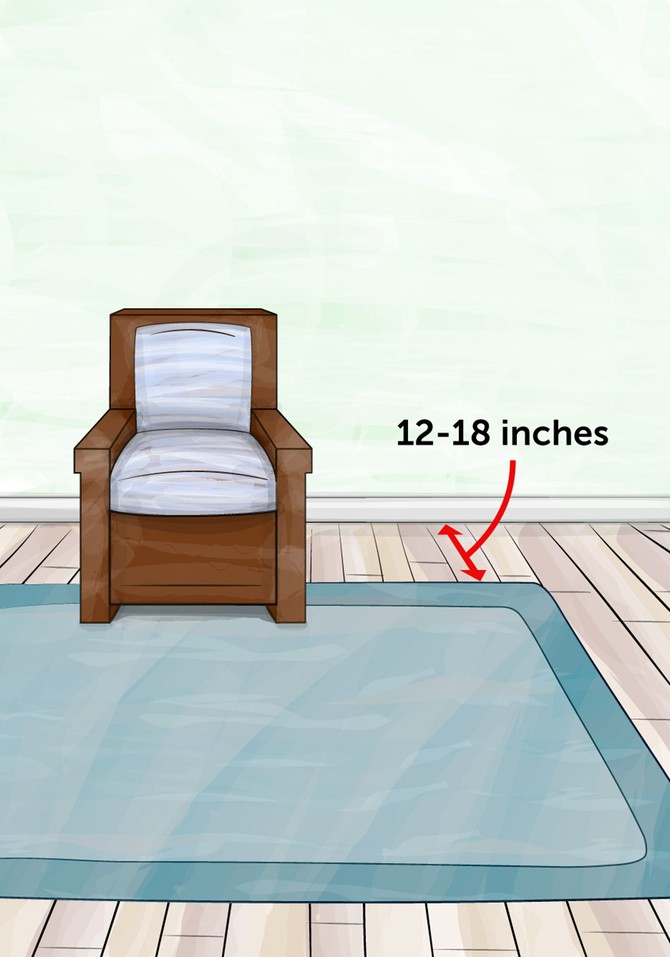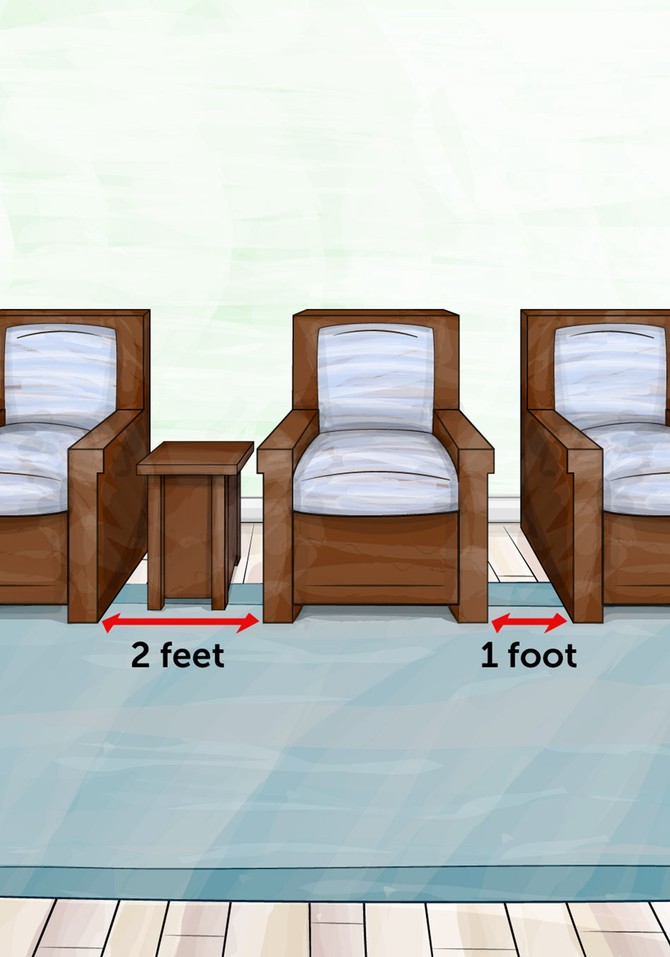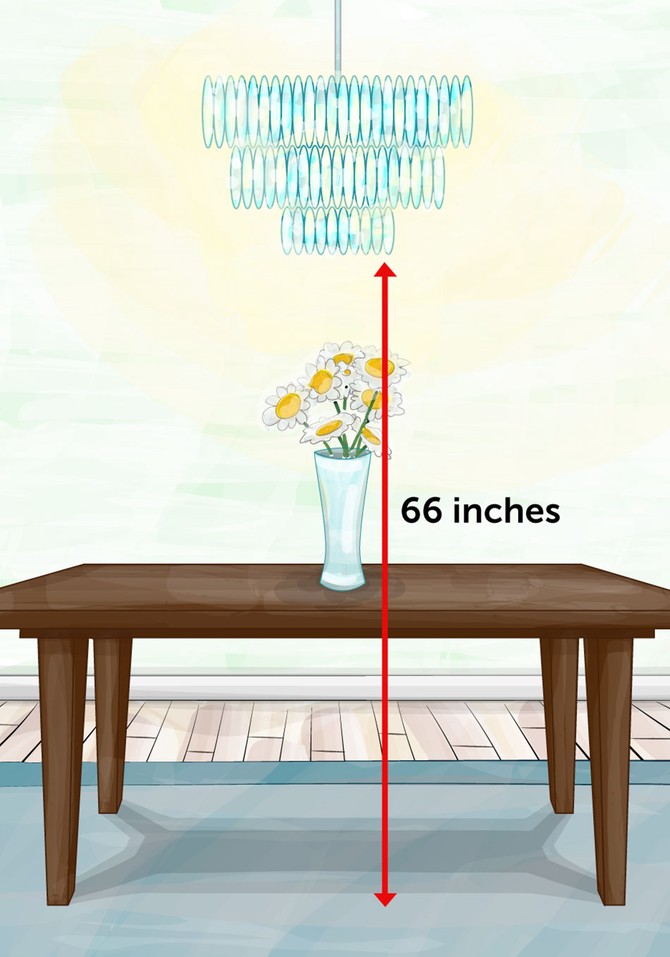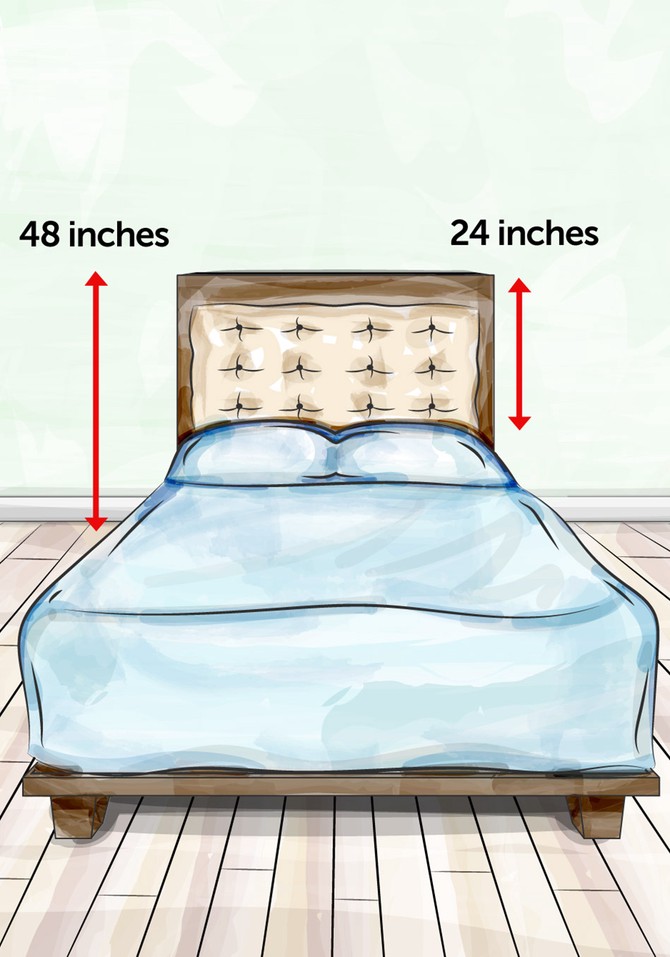The Property Brothers' Design Cheat Sheet That You Need
In their new book Dream Home, the HGTV hosts reveal a few essential measurements—from area rug size to chandelier height—that'll help you decorate your space to scale.
By Jonathan and Drew Scott

Illustration: David Wyffels
It All Adds Up to Great Design
Achieving a pleasing sense of proportion and scale in a room isn't all that complicated actually—if you have a tape measure. Many times, getting the numbers right is all it takes. Here are some common measurement guidelines that are sure to bring some aesthetic harmony to your house:
Area Rugs
The distance between an area rug and at least one wall should be between 12 and 18 inches so that flooring is visible. In oversized great rooms you can increase that distance between wall and rug or have it completely free floating in the center of the room if the space is big enough.
The front legs of your sofa and chairs should sit on an area rug—ideally the entire furniture grouping should be within the perimeter of an area rug.
Area Rugs
The distance between an area rug and at least one wall should be between 12 and 18 inches so that flooring is visible. In oversized great rooms you can increase that distance between wall and rug or have it completely free floating in the center of the room if the space is big enough.
The front legs of your sofa and chairs should sit on an area rug—ideally the entire furniture grouping should be within the perimeter of an area rug.

Illustration: David Wyffels
Armchairs
A pair of armchairs should sit about 1 foot apart in a seating arrangement, or 2 feet apart with a side table in between.

Illustration: David Wyffels
Art and Mirrors
Leave 2 inches between frames when hanging artwork or mirrors in groupings.
60 inches to the base is the optimal height for hanging larger pictures and mirrors on walls without other architectural features. We find most people hang their art too low. It should be in the upper one-third of an unobstructed wall.
60 inches to the base is the optimal height for hanging larger pictures and mirrors on walls without other architectural features. We find most people hang their art too low. It should be in the upper one-third of an unobstructed wall.

Illustration: David Wyffels
Chandeliers and Hanging Fixtures
Leave about 66 inches from the floor to the bottom of a dining table fixture. This leaves enough room for a centerpiece and doesn’t block the sight lines of people at the table—but it still leaves the table well lit.
For rectangular tables longer than 6 feet, an elongated fixture or two chandeliers may be necessary.
For rectangular tables longer than 6 feet, an elongated fixture or two chandeliers may be necessary.

Illustration: David Wyffels
Coffee Tables
Most sofa seats are 17 to 20 inches high, so an adjacent coffee table should be 15 to 18 inches high. Perfect height for putting your feet up ... not that our mom encourages that.
Allow around 18 inches between the coffee table and sofa edge to provide comfortable leg room—that’s close enough to set down drinks or reach snacks without straining or getting up.
Allow around 18 inches between the coffee table and sofa edge to provide comfortable leg room—that’s close enough to set down drinks or reach snacks without straining or getting up.

Illustration: David Wyffels
Dining Table
Try to provide at least 36 inches between the dining table and any walls or other furniture on all sides to allow seats to slide out easily and people to sit down without twisting an arm or an ankle.

Illustration: David Wyffels
Dining Chairs
Chairs and chair arms should be able to slide under a table easily. Allow for several inches between the chair arm and apron of the table.
Place dining chairs 6 inches apart at an absolute minimum, to prevent diners from colliding with one another.
Place dining chairs 6 inches apart at an absolute minimum, to prevent diners from colliding with one another.

Illustration: David Wyffels
Headboards
The standard height of a headboard is 48 inches from the floor to its top, which leaves about 24 inches from the top of the mattress to the top of the headboard. Higher-end headboards tend to be 55 to 68 inches, which works much better for us as we are tall. You want it to be comfortable enough to lean back against and read this book. Be careful about hanging artwork above the headboard, as you want to ensure you won’t knock your head on it.
You can go higher if you have the ceiling height. Just be sure to balance a high headboard with mattress-height nightstands (anything lower looks wonky). We personally prefer padded or tufted headboards, as they are comfortable to sit up against in bed.
You can go higher if you have the ceiling height. Just be sure to balance a high headboard with mattress-height nightstands (anything lower looks wonky). We personally prefer padded or tufted headboards, as they are comfortable to sit up against in bed.

Illustration: David Wyffels
Nightstands
Leave 2 inches between your nightstand and your bed—easy enough to reach for a glass or water or the alarm clock.
The ideal nightstand depth is 25 inches or less—any deeper and you might hurt your shoulder when rolling out of bed!
Think about scale. The larger the bed, the bigger your nightstand can go. King-size beds have the heft to stand up to a two-door cabinet, a three-drawer dresser, or even a drop-leaf table—if you’ve got the space go for it. For a twin or double bed, “leggy” tables and narrow three-drawer dressers (no more than 24 to 32 inches wide) work best.
Don't worry too much about matching the nightstands—sometimes it’s more interesting to choose two styles that contrast but complement each other.
The ideal nightstand depth is 25 inches or less—any deeper and you might hurt your shoulder when rolling out of bed!
Think about scale. The larger the bed, the bigger your nightstand can go. King-size beds have the heft to stand up to a two-door cabinet, a three-drawer dresser, or even a drop-leaf table—if you’ve got the space go for it. For a twin or double bed, “leggy” tables and narrow three-drawer dressers (no more than 24 to 32 inches wide) work best.
Don't worry too much about matching the nightstands—sometimes it’s more interesting to choose two styles that contrast but complement each other.

Text excerpted from DREAM HOME Copyright © 2016 by SB Publications LLC. Reproduced by permission of Houghton Mifflin Harcourt. All rights reserved.
Published 04/04/2016

